Rhythm of Castanets

You may have heard Castanets in several songs, but you may not have recognized them as Castanets. They were used extensively by almost all music directors in the golden era of Hindi film music (1950s and 60s).
Dholak, Tabla, Conga, Bongo are called the ‘primary’ rhythm or percussion instruments and Castanets are called ‘side percussion’. However, once you enjoy a song that has Castanets, it is hard to imagine the song without them. They add a distinctive lively touch to any song. Listen to the rhythm of the Castanets in the audio clip below.
Castanets are relatively tiny instruments that fit into the palms of the two hands and were originally used in European music. They can be played quickly in continuous notes to create a roll type of sound, or they can be played with each click on the castanet being a discrete note. The pioneering musician, Cawas Lord was instrumental in introducing them to Hindi film music. He and his son Kersi Lord played the instrument in several songs. Later, percussionists like Homi Mullan also played Castanets in a number of songs.
discrete note. The pioneering musician, Cawas Lord was instrumental in introducing them to Hindi film music. He and his son Kersi Lord played the instrument in several songs. Later, percussionists like Homi Mullan also played Castanets in a number of songs.
 discrete note. The pioneering musician, Cawas Lord was instrumental in introducing them to Hindi film music. He and his son Kersi Lord played the instrument in several songs. Later, percussionists like Homi Mullan also played Castanets in a number of songs.
discrete note. The pioneering musician, Cawas Lord was instrumental in introducing them to Hindi film music. He and his son Kersi Lord played the instrument in several songs. Later, percussionists like Homi Mullan also played Castanets in a number of songs.
While there are a number of songs that use Castanets, I tried to select 10 songs where the Castanets are an integral part of the song. Four of these songs feature artists dancing on the screen with Castanets in their hands. Enjoy these songs from the golden era by clicking the play arrow below on the audio player. On repeated plays, the player automatically shuffles songs.
(The player stops playing when you click the back button or go to another link on this page or somewhere else. This happens because the player is embedded on this page. To listen to these songs without any break, open another window after clicking the play arrow on the player. If you want to browse further on this site or another site, use the newly opened window. The player will keep playing the songs as you browse in the new window).
Rhythm for Melody Makers

Castanets were primarily designed for rhythm. A composer like Naushad laid more emphasis on melody rather than rhythm in his songs. However, the talent in Naushad gave us some of most memorable songs with Castanets. Lo pyaar ki ho gayi jeet and Jab nain mile nainon se from Jadoo are two of the finest examples in the use of Castanets. Naushad did not support blind copying or importing western styles of singing or instrumentation. These two songs were a strong statement about his belief that you can sound western even with Indian melodies, if you use western instruments with discretion. Both the songs are based on vocals that are essentially trademark Naushad Indian style melodies – long tunes with graceful undulations in the tune. Naushad blended these Indian style melodies beautifully with western interludes and outstanding use of Castanets to support the ‘western’ dances on the screen. If you listen carefully to these two songs, you will find that there is a lot of creative effort in the rhythm patterns and in playing the Castanets at various places in the song. Naushad also used Castanets in songs likeDhadke mera dil (Babul) and Tu kaun hai mera (Deedar). All these songs also show Naushad’s quest for excellence in all areas of his music. You can also enjoy other songs that showcase Naushad’s emphasis on excellence and innovation in arrangements atLively songs from Naushad.
S D Burman also laid more emphasis on melody in his songs. His tune Hai apna dil to awara (Solva Saal) has a lively touch aided by the rhythm of Castanets. And his superb melody Mora gora ang lai le (Bandini) uses Castanets extensively for a memorable effect. Madan Mohan, the king of soulful melodies showed the ‘western ‘ side of his music in Thodi der ke liye mere ho jao(Akeli mat jaiyo) that makes extensive use of Castanets.
Madan Mohan, the king of soulful melodies showed the ‘western ‘ side of his music in Thodi der ke liye mere ho jao(Akeli mat jaiyo) that makes extensive use of Castanets.
 Madan Mohan, the king of soulful melodies showed the ‘western ‘ side of his music in Thodi der ke liye mere ho jao(Akeli mat jaiyo) that makes extensive use of Castanets.
Madan Mohan, the king of soulful melodies showed the ‘western ‘ side of his music in Thodi der ke liye mere ho jao(Akeli mat jaiyo) that makes extensive use of Castanets.
Other melody makers like Ravi also used Castanets in films like Dilli ka thug. Perhaps the beautiful use of Castanets by Naushad was an inspiration for his assistant Ghulam Mohammed. One of his popular melodies from Pakeezah, Chalo dildar chalo chaand ke paar chalomakes lovely use of Castanets.
Rhythm for Rhythm Masters
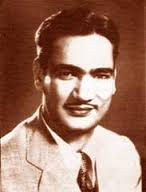
Any post on Castanets will be incomplete without the music of the ‘Original Rhythm King’ O P Nayyar. O P Nayyar was a trendsetter in rhythm based songs with his novel arrangements. Castanets were an integral part of his rhythm and percussion arrangements in a number of his hugely popular songs. Ae dil hai mushkil jeena yahan (CID) was one such number (based on a western tune ‘Oh my darling Clementine’) that made good use of Castanets. Aaiyee meherban (Howrah bridge) is a song in which Castanets play a lead role and can be heard clearly in the song. And the joyous Yeh chaand sa roshan chehra (Kashmir ki kali) makes use of Castanets to give a lively feel to the song.
R D Burman was renowned for having a superb rhythm section in his orchestra. Pancham’s emphasis on rhythm is evident from his early days. He used Castanets extensively in his debut movie Chote Nawab in the delightful Matwali ankhon wale. This song features Helen dancing with Castanets in hand. Lata glides through the song effortlessly and Mohd Rafi sings with a twist in his vocals. R D Burman also contributed to this song with his claps in the prelude, which is a delightful mix of Arabian and Flamenco styles.
effortlessly and Mohd Rafi sings with a twist in his vocals. R D Burman also contributed to this song with his claps in the prelude, which is a delightful mix of Arabian and Flamenco styles.
 effortlessly and Mohd Rafi sings with a twist in his vocals. R D Burman also contributed to this song with his claps in the prelude, which is a delightful mix of Arabian and Flamenco styles.
effortlessly and Mohd Rafi sings with a twist in his vocals. R D Burman also contributed to this song with his claps in the prelude, which is a delightful mix of Arabian and Flamenco styles.
Though Castanets may be called ‘side percussion’, their rhythm in songs and creative use of Castanets by talented composers make these songs a lively and delightful treat for the ears.
PS: If you want to enjoy some songs featuring lead performances by primary rhythm instruments like Drums, Conga or Bongo see the previous post Enjoyable western beats.
Posted in Hindi film music, Orchestration and arrangements, Special themes Tagged Akeli mat jaiyo, Arrangements in Hindi film music, Castanets, Cawas Lord, Chote Nawab, CID, Golden era of hindi film music, Hindi film music of 50s and 60s, Homi Mullan, Howrah Bridge, Jadoo, Kashmir ki kali, Kersi Lord, Naushad, O P Nayyar, Orchestration in Hindi films, Original Rhythm king, Pakeezah, Percussion instruments, R D Burman, Rhythm instruments, Rhythm King O P Nayyar, Rhythm section, S D Burman, Side percussion, Solva Saal 5 Comments
Enjoyable western beats
In my childhood, western beats fascinated me. The sound of Kishore Kumar singing Mere saamne wali from Padosan would make me run to the radio. The ‘imagined’ sound of a comb on a broom in the song was fascinating. But, even more fascinating to my young ears was the sound of conga and drums that followed ‘baadal bhi garaj kar baras gaye’. As a child in the pre-teen years, the sound of bongos, conga or drums was exciting. They symbolized western, zestful and lively songs and not ‘slow or boring’ songs. And of course, the height of delight in my childhood was hearing the continuous roll of drums.
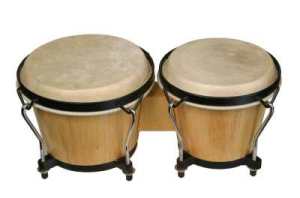
Bongo
As I grew up, I started appreciating the finer nuances and the delights of other genres and styles in film music beyond the childhood fascination with bongos/conga/drums. I also started admiring and appreciating songs that I had earlier dismissed as slow and boring!
In this post, I will try and share the joys of western percussion instruments like bongo, conga and drums. I have compiled a special list of 15 songs on the player for your enjoyment. Almost all Hindi films, of course have songs with bongo, conga or drums playing the rhythm. But, I compiled this special list of 15 songs applying the following criteria:
You should distinctly hear the bongo, conga or drums played as a lead instrument for at least a few seconds, in some part of the song,
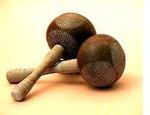
Maracas
Here are a couple of examples of what I mean by lead instrument. (Normally, when rhythm instruments like bongo, conga are played as a lead instrument, they also have some backup rhythm that is normally played along with them on the banjo/guitar/maracas. Even for a few seconds, if you hear only rhythm and backup rhythm instruments playing and nothing else, I am calling it a lead performance by bongo, conga or drums).
Listen to the beats of bongo for 10 seconds from Raat ka samaa (Ziddi) by clicking the arrow below. (Bongo has a sharper sound than the Conga).
and
Listen to the superb beats of conga for about 15 seconds from Aaya hoon main tujhko(Manoranjan) below (backup rhythm by maracas).
I have also limited myself to selecting hindi film songs from the 1950s to the 1970s (with one song from 1980). This commentary therefore excludes the wonderful work of A R Rahman and the famous percussionist Sivamani, who played a lot for A R Rahman. A R Rahman is known for his heavy use of percussion (both literally and figuratively). Sivamani, a versatile talent on percussion, is known to play on anything he can lay his hands on (including a carton or bucket or anything else that is handy!). I may explore A R Rahman’s music in a later post. I use the term western percussion to include primarily bongo, conga and drums. These instruments had origins in Latin America, Cuba, Europe and parts of Africa.
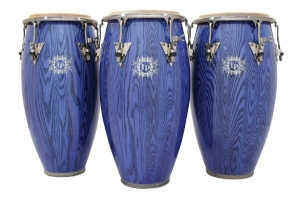
Conga
Click on the play arrow below to enjoy 15 songs with western beats. On repeated plays, the player automatically shuffles songs.
(The player stops playing when you click the back button or go to another link on this page or somewhere else. This happens because the player is embedded on this page. To listen to these songs without any break, open another window after clicking the play arrow on the player. If you want to browse further on this site or another site, use the newly opened window. The player will keep playing the songs as you browse in the new window).
Early beats
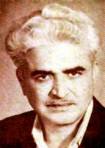
The stalwarts of the golden era (1950s and 60s) mastered western styles as well as the use of western instruments including percussion instruments. C Ramchandra, the maverick composer used the conga, bongo beautifully as lead instruments in Albela in songs likeDeewana Parwana. Naushad also made lovely use of western percussion in movies like Jadoo.
S D Burman, known for creating ‘light’ music, uses the bongos beautifully as lead instruments in the delightful classic Sar jo tera chakraye (Pyaasa) to accompany the visuals of the ‘maalish’.
Shanker-Jaikishen who used Jazz and other western styles extensively have a lengthy prelude with a lovely conga piece in Sukku Sukku (Junglee). Ravi, known for his soothing and simple melodies, showed he is also a master of western instruments, including the drums in the lead in Zindagi ittefaq hai (Aadmi aur Insaan). Usha Khanna, who made her debut with Dil deke dekho featured the roll of drums as the lead instrument in the title song. Interestingly, this song has drums, bongo and also tabla at various stages.
Some of the golden era stalwarts who continued to enjoy popularity in the 70s as well used western percussion effectively in the 70s. S D Burman had a delightful little bongo piece inChoodi nahin hai mera (Gambler) and Madan Mohan had solo drums playing in Tum jo mil gaye ho (Hanste Zakhm).
Cawas Lord was the pioneering musician in Hindi films for western percussion. He used bongos and other percussion instruments extensively. His sons Burjor and Kersi Lord also mastered percussion instruments. Kersi Lord went on to became a famous arranger and musician, who introduced novel arrangements and new types of instruments and sounds in film music.
Pancham’s beats

R D Burman, created waves in Teesri Manzil with his trendsetting mix of rock and jazz styles. During his early years as a composer, R D Burman carried a strong image of being ‘western’ in his music. A number of his songs feature lovely use of bongos, conga and drums as lead instruments. Who can forget the silhouetted image of ‘Rocky’ Shammi Kapoor playing the drums in O haseena zulfon wali in Teesri Manzil? (The actor ‘behind the curtain’ who played the drums during the shooting for this song was Leslie Godinho, the drummer from Pancham’s orchestra who played the drums we hear in the song). Another early movie of Pancham, The Train features lovely bongos in Gulabi Aankhen.
The 70s saw the introduction of larger orchestras and more instruments (also louder!). Yaadon ki baraat, a super hit in the early 70s had O meri soni that had the roll of bongos that accompanied the visuals of rocks falling on the hillside (the roll you hear after the gasp by Asha Bhonsle was created using bongos as the main instrument). Though this song has only a fleeting roll of the bongos, it highlights the importance Pancham attached to western percussion.
Perhaps the best use of conga as a lead instrument by Pancham is in the Middle eastern music based song Aaya hun main tujhko (Manoranjan). This song has delightful and lengthy beats at 3 different places in the song, including a complex 32 matra pattern played by Maruti Rao Keer. I would rate this song as Pancham’s best in terms of complexity of the beat patterns, the skill involved in playing and our enjoyment of the beats.
Babla’s beats
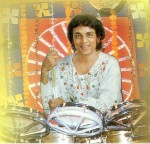
Apart from R D Burman, who mastered western styles and orchestration, Kalyanji-Anandji also demonstrated mastery and sophisticated use of western instruments. Babla, the younger brother of the duo Kalyanji and Anandji was a child prodigy and a wizard in western percussion. As their assistant from late 60s, Babla managed the rhythm section in most of their songs, often playing percussion instruments himself as the lead performer.
The hugely popular Husn ke lakhon rang (Johny mera naam) features bongos as a lead instrument that play in tandem with trumpet and other instruments to gradually build up the tempo in the song. A similar song, Dil jalon ka (Zanjeer) features lovely roll of bongos. Babla also played the conga delightfully in Do bechare (Victoria no 203).
Babla introduced new types of percussion instruments in film music. He introduced roto drums in Muqaddar ka Sikandar in the song Pyaar zindagi hai and in Laila o Laila(Qurbani) he played them himself. Though the visuals in the movie show Amjad Khan playing on a normal set of drums, the song actually uses roto drums. I am sure Babla’s amazing beats in this lead performance along with conga will have everyone tapping their feet! Babla also introduced Laali, a new instrument from Fiji in the super hit Yeh mera dil (Don).
Innovative beats
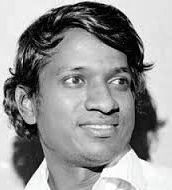
You may be wondering what could be innovative in using bongos, conga and the drums. Plenty for creative minds like Naushad! Naushad departed from his usual classical and folk based style in Saathi. Saathi saw Naushad use western music styles and concepts like counterpoint beautifully. Kersi Lord (who did his initial work mostly for Naushad) explained how they used bongo and conga in tandem with the South Indian percussion instrument Mridangam in Saathi for an innovative and different type of western beat. Listen to these delightful beats in Mera pyaar bhi tu hai (by clicking the arrow below). You can hear these innovative beats throughout the vocal melody sung by Suman Kalyanpur and Mukesh. I must admit that there is no lead performance by rhythm in this song. I included it only to demonstrate innovation in western beats.
instrument Mridangam in Saathi for an innovative and different type of western beat. Listen to these delightful beats in Mera pyaar bhi tu hai (by clicking the arrow below). You can hear these innovative beats throughout the vocal melody sung by Suman Kalyanpur and Mukesh. I must admit that there is no lead performance by rhythm in this song. I included it only to demonstrate innovation in western beats.
 instrument Mridangam in Saathi for an innovative and different type of western beat. Listen to these delightful beats in Mera pyaar bhi tu hai (by clicking the arrow below). You can hear these innovative beats throughout the vocal melody sung by Suman Kalyanpur and Mukesh. I must admit that there is no lead performance by rhythm in this song. I included it only to demonstrate innovation in western beats.
instrument Mridangam in Saathi for an innovative and different type of western beat. Listen to these delightful beats in Mera pyaar bhi tu hai (by clicking the arrow below). You can hear these innovative beats throughout the vocal melody sung by Suman Kalyanpur and Mukesh. I must admit that there is no lead performance by rhythm in this song. I included it only to demonstrate innovation in western beats.
The music of Ilayaraja, the genius from South India, defies description. Almost every song of Ilayaraja has something new. It is only Ilayaraja’s genius that can come up with a superb piece of innovation using western percussion instruments. Listen carefully to the Telugu dance song Raja Rajadhi Raja (Gharshana). Telugu is the language spoken in the new state of Telangana and the residuary state of Andhra Pradesh. It does not matter whether you understand a South Indian language or not. If you observe, you will notice thatthroughout the prelude and the interludes, Ilayaraja used only western beats and nothing else! It is very unusual indeed to find that there are no instruments at all other than western beats. In fact, Ilayaraja also uses chorus to simulate western beats and other instruments! This is truly the hallmark of a genius. Ilayaraja also demonstrates in this song that you need creativity, rhythm and melody to create a great dance number. You do not need heavy thumping beats, loud music or high-pitched vocals for a dance song! Observe the innovation and enjoy this song by clicking the arrow below.
If you can listen to any music without language barriers, you will enjoy other innovative songs from Ilayaraja in my post, Hits of Ilayaraja, innovation.
The western beats are always a joy in most of the songs. But when you have songs that have a distinct and special place for western beats, it adds a special dimension to our enjoyment of the beats and songs.
Posted in Hindi film music, Orchestration and arrangements, Special themes Tagged Albela, Babla, bongo, conga,Dil deke dekho, drums, Ilayaraja, Innovative western beats, Johny mera naam, Kalyanji-Anandji, Manoranjan,Naushad, Padosan, Pancham, Pyaasa, Qurbani, R D Burman, roto drums, S D Burman, Saathi, Teesri Manzil, The train, Victoria no 203, Western beats, Yaadon ki baarat, Zanjeer, Ziddi 4 Comments
Kalyanji-Anandji, the immortal duo
My earlier posts on Kalyanji-Anandji (see Kalyanji-Anandji in categories to your right) covered 5 different dimensions of their music. In this post, I will summarize notable films, songs, achievements and key recognitions that highlight their versatile talent. I will also discuss their distinctive composing style and more importantly, highlight their personal nature and why they are immortal.
Click on the play arrow below to enjoy some of their finest songs from the 60s and 70s. On repeated plays, the player automatically shuffles songs.
(The player stops playing when you click the back button or go to another link on this page or somewhere else. This happens because the player is embedded on this page. To listen to these songs without any break, open another window after clicking the play arrow on the player. If you want to browse further on this site or another site, use the newly opened window. The player will keep playing the songs as you browse in the new window).
Ascending 60s

From 1958 when Kalyanji started out solo, they delivered musical hits through the 1960s. Songs from their early movies like Samrat Chandragupt, Post box 999, Passport, Bedard Zamana Kya Jaane, Satta Bazaar and Madari were melodious hits and continue to delight listeners even after 50 years. (Satta Bazaar was the first film in which Anandji joined his brother as the duo. Earlier, Anandji was assisting Kalyanji). They produced melodious songs in each film regardless of the hero or association with a big-ticket name. Whether it is Mehmood in Pyaase Panchi or Helen in Sunehri Nagin playing romantic roles, they composed memorable songs for them. A Sunehri Nagin duet Milke bhi hum features Talat Mahmood and his lovely dulcet voice. Dil bhi Tera Hum Bhi Tere was notable for its poignant Mukesh numbers. Mehndi lagi mere hath, Ji Chahta hai, Saheli, Ishara, Purnima, Raaz, Parivar and Suhaag Raat also had melodious songs.

They were not the primary music directors for any of the top heroes like Raj Kapoor, Dilip Kumar, Dev Anand. Despite this, they gained popularity with each passing year. When they got breaks to compose music for films starring the Kapoor brothers, they delivered musical hits – Chalia, Dulha Dulhan (Raj Kapoor), Bluff master (Shammi Kapoor), Dil ne Pukara, Haseena maan jayegi, Jab Jab phool khile and Aamne Saamne (Shashi Kapoor). Many piano and western numbers in these films added an alluring appeal to the image of sophisticated and good looking Shashi Kapoor. With Dev Anand as well, they had a musical hit in Mahal.
Their high quality, melodious and memorable music in Himalay ki goud mein, Upkar, Saraswati Chandra and Vishwas gave them enviable recognition from peers and critics and provided additional momentum to their ascent to the top tier by the end of 1960s. They were focused on melodic content and lyrics in their songs in the 60s. Some of their songs in the 60s became iconic songs with immediate recall and association with popular festivals and national days that symbolized patriotic fervor (example:Govinda aa laa re from Bluffmaster, Mere desh ki dharti from Upkar).
Saraswati Chandra and Vishwas gave them enviable recognition from peers and critics and provided additional momentum to their ascent to the top tier by the end of 1960s. They were focused on melodic content and lyrics in their songs in the 60s. Some of their songs in the 60s became iconic songs with immediate recall and association with popular festivals and national days that symbolized patriotic fervor (example:Govinda aa laa re from Bluffmaster, Mere desh ki dharti from Upkar).
 Saraswati Chandra and Vishwas gave them enviable recognition from peers and critics and provided additional momentum to their ascent to the top tier by the end of 1960s. They were focused on melodic content and lyrics in their songs in the 60s. Some of their songs in the 60s became iconic songs with immediate recall and association with popular festivals and national days that symbolized patriotic fervor (example:Govinda aa laa re from Bluffmaster, Mere desh ki dharti from Upkar).
Saraswati Chandra and Vishwas gave them enviable recognition from peers and critics and provided additional momentum to their ascent to the top tier by the end of 1960s. They were focused on melodic content and lyrics in their songs in the 60s. Some of their songs in the 60s became iconic songs with immediate recall and association with popular festivals and national days that symbolized patriotic fervor (example:Govinda aa laa re from Bluffmaster, Mere desh ki dharti from Upkar).Dominant 70s

As a carry over of the ‘non violent’ themes from 1960s, the year 1970 saw their movies like Geet, Yaadgar, Mere humsafar, Purab aur Paschim stand out for extremely melodious, soulful and appealing songs. Kalyanji-Anandji also rode the Rajesh Khanna wave in the early 70s with Safar, Sachha Jhootha, Maryada. Zindagi ka safar and Jeevan se bhari from Safar are among Kishore Kumar’s best songs. The haunting prelude toJeevan se bhari is a great example of silken sitar melody, heavenly flute and superb orchestration.
Vijay Anand’s Johny Mera Naam was a big-ticket film in 1970 that set the trend for crime movies during the 70s. Kalyanji-Anandji showed that you can deliver a block buster musical hit even in a crime dominated movie. Apart from the songs that were hugely popular, Kalyanji-Anandji showed a distinctive flair for composing catchy title music. The title music of Johny Mera Naam stood out for its appealing tune and superb orchestration. They went on to compose appealing title music for a number of other movies like Dharmatma, Victoria No 203 and Professor Pyarelal. Kalyanji-Anandji also had another musical hit in Vijay Anand directed Blackmail as well as the Vijay Anand starrer Kora Kagaz.
During the 1970s, Babla (younger brother of Kalyanji-Anandji) added an attractive dimension to Kalyanji-Anandji’s music as their assistant. A wizard with percussion instruments and a master of rhythm, he introduced several innovative elements to their films. Instead of the traditional background music for suspense or crime scenes, Babla used bongo to provide a distinctive appeal in Victoria No. 203. In addition, a number of their movies featured haunting background music (Example: Dharmatma). In a later post, I will discuss more innovations by Babla.
dimension to Kalyanji-Anandji’s music as their assistant. A wizard with percussion instruments and a master of rhythm, he introduced several innovative elements to their films. Instead of the traditional background music for suspense or crime scenes, Babla used bongo to provide a distinctive appeal in Victoria No. 203. In addition, a number of their movies featured haunting background music (Example: Dharmatma). In a later post, I will discuss more innovations by Babla.
 dimension to Kalyanji-Anandji’s music as their assistant. A wizard with percussion instruments and a master of rhythm, he introduced several innovative elements to their films. Instead of the traditional background music for suspense or crime scenes, Babla used bongo to provide a distinctive appeal in Victoria No. 203. In addition, a number of their movies featured haunting background music (Example: Dharmatma). In a later post, I will discuss more innovations by Babla.
dimension to Kalyanji-Anandji’s music as their assistant. A wizard with percussion instruments and a master of rhythm, he introduced several innovative elements to their films. Instead of the traditional background music for suspense or crime scenes, Babla used bongo to provide a distinctive appeal in Victoria No. 203. In addition, a number of their movies featured haunting background music (Example: Dharmatma). In a later post, I will discuss more innovations by Babla.
Kalyanji-Anandji scored music for Zanjeer which marked the entry of Amitabh Bacchan, who became a one man industry for many years. They also scored music for many other Amitabh blockbusters in the 1970s including Don, Muqaddar Ka Sikandar, Hera Pheri. Kasauti stands out for an unusual Kishore number Hum bolega to bologe ki with interesting sounds and a different style of singing.

Even in the predominantly ‘crime movies’ trend of the 1970s, Kalyanji-Anandji were able to make their music stand out with a distinctive appeal. Johny Mera Naam, Haath Ki Safai, Apradh, Dharmatma, Banarasi Babu featured lovely duets that became huge hits. In the 60s, Kalyanji-Anandji composed melodies predominantly with an Indian base, at the same time scoring with popular western tunes (example: Nain milakarfrom Aamne Saamne). However, in the 1970s (especially after 1974) they adapted easily to the popular tastes and made their compositions predominantly western.
Safai, Apradh, Dharmatma, Banarasi Babu featured lovely duets that became huge hits. In the 60s, Kalyanji-Anandji composed melodies predominantly with an Indian base, at the same time scoring with popular western tunes (example: Nain milakarfrom Aamne Saamne). However, in the 1970s (especially after 1974) they adapted easily to the popular tastes and made their compositions predominantly western.
 Safai, Apradh, Dharmatma, Banarasi Babu featured lovely duets that became huge hits. In the 60s, Kalyanji-Anandji composed melodies predominantly with an Indian base, at the same time scoring with popular western tunes (example: Nain milakarfrom Aamne Saamne). However, in the 1970s (especially after 1974) they adapted easily to the popular tastes and made their compositions predominantly western.
Safai, Apradh, Dharmatma, Banarasi Babu featured lovely duets that became huge hits. In the 60s, Kalyanji-Anandji composed melodies predominantly with an Indian base, at the same time scoring with popular western tunes (example: Nain milakarfrom Aamne Saamne). However, in the 1970s (especially after 1974) they adapted easily to the popular tastes and made their compositions predominantly western.
In the 1970s they had huge hits with Bollywood masala films or ‘pot boilers’. It would be a mistake to identify Kalyanji-Anandji only with these pot boilers, since the 50s and 60s saw them at their best with lovely melodies for social, romantic and family themes. Unfortunately, some people remember Kalyanji-Anandji only for their hits in the 1970s (and love them for it), but are ignorant of the duo’s melodious music of the 50s and 60s.
Like the 1960s, they also had iconic songs in the 1970s like Meri pyari behna (Sachcha Jhootha), which is normally played by bands in every wedding. Except for a couple of years in the 1970s, they had big hits throughout the 1970s. They dominated the 1970s along with R D Burman and Laxmikant-Pyarelal.
Retirement precursors

After their dominant run in the 70s, they entered the 80s with a block-buster hit in Qurbani. The trend of using instruments from the Middle East, which started with Dharmatma, continued in Qurbani. 1981 saw another block-buster hit in Laawaris. Vidhaata, Yudh, Kalaakaar and Jaanbaz were also notable for their music in the 80s. But then, musical hits became fewer as they progressed through the 1980s. Though their career technically continued till 1994, Tridev in 1989 can be considered their swan song. It is perhaps fitting that Kalyanji-Anandji chose to retire when they did, with pleasant memories in everyone’s mind.
Refreshingly different

While Kalyanji-Anandji delivered many memorable songs with Lata, Mukesh, Kishore and Rafi they composed lovely melodies for other leading singers as well. Suman Kalyanpur sounded very Lata like in Man mera tujhko (Paras). Two of Mahendra Kapoor’s best songs are the iconic Mere Desh ki dharti (Upkar) and Hai preet jahan ki reet(Purab aur Paschim). Nadiya chale chale re dhara (Safar) is a lovely wavy composition for Manna Dey with the pleasing sound of water. One of my favourite Asha songs is Ae Naujawan (Apradh) with lovely fusion music. In Bluffmaster, while Rafi was ‘Shammi’s voice’ by default, they used Mukesh and Hemant Kumar as well on Shammi Kapoor. And to top it all, in the same movie, they used Shamshad Begum also on Shammi Kapoor when he was disguised as a ‘woman’, making it a unique case of four singers for Shammi Kapoor in the same film!
They also composed unusual or different songs for some special situations. The song Yeh do deewane milke from Johar Mehmood in Goa is a comic situation with the jail referred to as ‘Sasural’. This song was on everyone’s lips for a long time. And in Ek tha gul aur (Jab Jab phool khile) they make a story recital very musical with lovely interludes, rhythm and words.
Distinctive style

Over their career, the duo composed innumerable songs in a variety of genres, styles and themes. Since their songs covered a wide range, we cannot pinpoint a common pattern that stands out distinctly as their style. Kalyanji-Anandji seemed to get absorbed in the situation and could compose simple and melodious songs that accentuated the emotions in the lyrics very well. Their sad songs were haunting and poignant. In other situations that called for expressions of joy, they seemed to revel in the mood and created breezy numbers and sometimes boisterous ones as well.
However, over the years, I noticed some distinct preferences that can be called their signature style. Apart from simple melodies that accentuated the lyrics, they paid close attention to instrument arrangements as well. Often, they would choose specific instruments that are very distinctive and delightful for the ear as well as on the screen. This combination of simple melody, touching lyrics and attractively orchestrated presentation gave most of their songs a classy and sophisticated feel. Observe the instruments and effects in the two Mukesh solos in Himalay ki goud mein or the hilly orchestration in Ek tha gul (Jab Jab phool khile). Also, notice how a lovely Indian melody in Wada karle saajna (Haath ki safai) was attractively presented with a touch of class using saxophone, piano and plucked string instruments.
Himalay ki goud mein or the hilly orchestration in Ek tha gul (Jab Jab phool khile). Also, notice how a lovely Indian melody in Wada karle saajna (Haath ki safai) was attractively presented with a touch of class using saxophone, piano and plucked string instruments.
 Himalay ki goud mein or the hilly orchestration in Ek tha gul (Jab Jab phool khile). Also, notice how a lovely Indian melody in Wada karle saajna (Haath ki safai) was attractively presented with a touch of class using saxophone, piano and plucked string instruments.
Himalay ki goud mein or the hilly orchestration in Ek tha gul (Jab Jab phool khile). Also, notice how a lovely Indian melody in Wada karle saajna (Haath ki safai) was attractively presented with a touch of class using saxophone, piano and plucked string instruments.
A number of their songs had elongated notes at the end in the mukhda, antara or both(example: Babul Pyaare from Johny Mera Naam or O Saathi re from Muqaddar Ka Sikandar). These elongated notes, sometimes with a little murki at the end became their signature. In other inspired songs, they used a limited range of notes in the octave with a smooth transition from one note to the adjacent one (observe Ham the jinke sahare from Safar or Sama hai suhana from Ghar Ghar ki kahani). This made their songs soft, soothing and melodious. They maintained a fine balance between vocals and orchestration, Indian and western styles, and made their tunes simple and appealing. In earlier posts, I highlighted other distinctive features like their mastery over string instruments, the use of chorus for rhythm, the lingering preludes and the ‘pause-start’ tempo pick up, which are integral to their composing style. Rajan-Nagendra a famous composing duo in South Indian film music were called ‘Kalyanji-Anandji’ of the south because of the fine blend of melody, instrument arrangements, preference for string instruments and lovely orchestration.

Kalyanji-Anandji could compose delightful light classical songs and at the same time could turn out the most sophisticated western songs with superb orchestration. A number of their songs also had a lovely blend of rhythm and melody. Finely balanced and truly versatile, is an apt summary of their style.
Large hearts

There are innumerable instances of how they readily organized numerous shows to support causes like relief for victims of natural disasters like earthquakes. Kalyanji-Anandji would be the first name that came to mind for a charitable purpose. In addition, they also showed a large heart when it came to recognition for their core team. In the late 1960s and throughout 1970s, it was quite common to see the following as credits on a separate card in the movie titles.
Music assistant: Babla
Arranged by: Jaikumar Parte
Conducted by: Frank Fernand
These 3 were the foundation for their music hits. Sometimes the three changed roles, but together as a team, they provided Kalyanji-Anandji with innovative and ‘top of the line’ professional support to make their movies musical hits.
Another indication of their large hearted nature is their association with ‘first time’ directors. They did not see such associations as risky and guaranteed musical success for someone starting out on their first directorial venture. Manmohan Desai, Sultan Ahmed, Prakash Mehra, Arjun Hingorani, Subhash Ghai, Feroz Khan, Manoj Kumar, Chandra Barot had huge hits with Kalyanji-Anandji in their debut movies as directors. They were also associated with debutant lyricists like Gulshan Bawra, M G Hashmat, Anjaan. A majority of their soulful and popular numbers had lyrics by Indeevar though they also worked with other famous lyricists.
directors. They did not see such associations as risky and guaranteed musical success for someone starting out on their first directorial venture. Manmohan Desai, Sultan Ahmed, Prakash Mehra, Arjun Hingorani, Subhash Ghai, Feroz Khan, Manoj Kumar, Chandra Barot had huge hits with Kalyanji-Anandji in their debut movies as directors. They were also associated with debutant lyricists like Gulshan Bawra, M G Hashmat, Anjaan. A majority of their soulful and popular numbers had lyrics by Indeevar though they also worked with other famous lyricists.
 directors. They did not see such associations as risky and guaranteed musical success for someone starting out on their first directorial venture. Manmohan Desai, Sultan Ahmed, Prakash Mehra, Arjun Hingorani, Subhash Ghai, Feroz Khan, Manoj Kumar, Chandra Barot had huge hits with Kalyanji-Anandji in their debut movies as directors. They were also associated with debutant lyricists like Gulshan Bawra, M G Hashmat, Anjaan. A majority of their soulful and popular numbers had lyrics by Indeevar though they also worked with other famous lyricists.
directors. They did not see such associations as risky and guaranteed musical success for someone starting out on their first directorial venture. Manmohan Desai, Sultan Ahmed, Prakash Mehra, Arjun Hingorani, Subhash Ghai, Feroz Khan, Manoj Kumar, Chandra Barot had huge hits with Kalyanji-Anandji in their debut movies as directors. They were also associated with debutant lyricists like Gulshan Bawra, M G Hashmat, Anjaan. A majority of their soulful and popular numbers had lyrics by Indeevar though they also worked with other famous lyricists.
Kalyanji-Anandji also believed that they will receive whatever they are destined to and no one can rob them of their destiny. This philosophy made them large hearted, selfless. They did not push themselves or seek publicity or recognition by aggressive means. Perhaps this is the reason why they are the most underrated composers. They let their music and stupendous deeds do all the talking for them.
Multiple recognitions
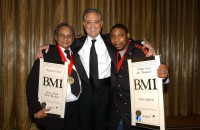
Songs listed in the earlier posts and included in the player in this post total more than 100. All of these songs are high quality, hugely popular and evergreen that appeal to the old and the young alike. There are also perhaps another 100 or more songs that are also hugely popular, though I may not have listed them in this blog. These melodious, popular and chartbuster songs enabled Kalyanji-Anandji to gather several awards and recognitions, including peer awards and government recognition like the Padmasri.
But, perhaps their best recognition came long after they retired! The internationally acclaimed group Black Eyed Peas included tunes (with full credit to Kalyanji-Anandji) from two of their biggest hits (Yeh mera dil from Don and Ae naujawan from Apradh) in their song Don’t phunk with my heart. This song won a Grammy Award and Anandji was felicitated by BMI (Broadcast Music, Inc) on behalf of the duo in 2006, several years after their retirement! This perhaps is a recognition of the evergreen appeal of Kalyanji-Anandji’s music not only to the younger generation but also to a substantial international population. Several of their hits were remade in multiple languages, remixed, and featured in advertisements on TV.
Immortal duo

Kalyanji-Anandji were hugely popular as composers, but other composers were popular as well. While their shows for charitable causes are well remembered, they are not the only composers who helped in such causes. As they climbed the ladder of success, they achieved fame, popularity and of course material rewards for their hugely successful music blockbusters.

Alka Yagnik
But, Kalyanji-Anandji did not limit their vision to composing melodious music and steadily rising on the recognition or popularity graph. They had a broader vision of contributing with a permanent and everlasting legacy of spotting, grooming and providing singing talent for the music industry. They would encourage child singers and any other singer they spotted to hone their skills and talent to be among the best. Their commitment to this cause did not stop with mere advice or encouragement. They invested a substantial portion of their time, money and energy for the single minded purpose of promoting singing talent. They created schools, groups (like Little Wonders, Little Stars) that focused only on encouraging talent and giving them exposure through shows. It is this zeal, passion and vision to contribute to the larger music industry, which makes them stand out from the rest. Alka Yagnik, Sadhana Sargam, Sunidhi Chauhan, Kumar Sanu, Sapna Mukherjee, Manhar Udhas, Babul Supriyo are among the many singers who were spotted, encouraged, groomed and given a break by Kalyanji-Anandji. Some like Sadhana Sargam and Sunidhi Chauhan were children when their talent was spotted by Kalyanji-Anandji. As Babul Supriyo said in his Times Now interview on July 7 2013, it is this selfless sacrifice and commitment for the larger cause of the music industry that made Kalyanji-Anandji immortal.
The multifaceted talents of these two maestros created many unforgettable and impactful songs in film music. Their evergreen music lives on through their songs, but their legacy lives on throughout the entire film music industry through their protégés. My humble salutations to this immortal and cheerful duo who worked selflessly and put others before themselves.

Sunidhi Chauhan

Sadhana Sargam
Posted in Great music directors - Hindi, Hindi film music, Kalyanji-Anandji, Orchestration and arrangements TaggedAamne Samne, Apradh, Bluff master, Dharmatma, Dil ne pukara, Don, duets of kalyanji anandji, Haath ki safai,Haseena maan jayegi, Himalay ki god mein, hits of Kalyanji Anandji, Jaanbaaz, Jab Jab phool khile, Johny mera naam, Kalyanji Virji Shah, Kalyanji-Anandji, Kasauti, Kishore Kumar hits, Kishore Kumar soulful songs, Kora Kagaz,Laawaris, Mere humsafar, Mukesh hit songs, Muqaddar ka sikandar, Paras, Purab aur Paschim, Purnima, Pyaase panchi, Qurbani, Saccha Jhoota, Safar, Saraswati Chandra, Sunehri nagin, Upkar, Vishwas, Zanjeer 12 Comments
Lively songs from Naushad
Naushad’s music has many dimensions. Over the years, people have associated his music with classical base, purity and of course, chart busting popularity.
Indian film music encompasses several genres. However, two genres stand out as dominant pillars (among others) in Hindi film music (especially the pre 1970s music). One genre is based on classical traditions and the other on folk traditions. Classical music tends to be more intellectual and perhaps more ‘metro’ or urban in nature. However, folk music appeals to all tastes and is extremely popular among rural as well as urban folk. We are indeed blessed to have these two strong traditions enriching our film music. Naushad straddled these two pillars of classical and folk base like a giant and rode to the pinnacle of popularity during the 1940s, 50s and to some extent in the 60s as well.

With Rattan, he showcased the immense appeal of folk music very early in his career. In later years as well, he created a number of lively songs with a folk base and flavor that make them easy on the lips as well as ears. Even when a song has a classical base, he introduced elements of folk. One never knew where the classical ended and the folk began. He created two important milestones in Hindi film music – Rattan for folk music and Baiju Bawra for classical music. A common feature across most of his lively songs is a fine blend of rhythm and melody. The blend of melody and rhythm makes his songs flow in waves with the melody synchronized to go up and down in tandem with the rhythm. As a result, dances on the screen fit perfectly to the tune and are graceful, smooth and easy flowing like the tune they are based on.
This post is devoted to the multitude of lively songs that he composed through the 1940s, 50s and 60s. I have deliberately emphasized the word lively. By lively, I do not mean only songs that celebrate joy or abandon. I mean songs that have a (relatively) lively and attractive pace when compared to slow, brooding songs. Some of his lively songs may actually be sad situations. But the songs may be lively with a relatively fast tempo or with lyrics, expressions or situations that appear cheerful!. For example, Afsana likh rahi hoon (Dard) is actually a sad situation but the song canters along at an attractive pace, much like any other joyful song.
Enjoy 25 of these lively songs on the player below. You can skip a few songs, if required. On repeated plays, the player automatically shuffles songs. Click on the play arrow below and enjoy!
(The player stops playing when you click the back button or go to another link on this page or somewhere else. This happens because the player is embedded on this page. To listen to these songs without any break, open another window after clicking the play arrow on the player. If you want to browse further on this site or another site, use the newly opened window. The player will keep playing the songs as you browse in the new window).
Awesome arrangements

Among the music directors of his era, Naushad spent a lot of time in mastering the finer points of instrument arrangements and overall orchestration. He experimented with western styles in Jadoo and brought in beautiful instrumentation in films like Dillagi, Dard and Uran Khatola. Uran Khatola is notable for many innovative and appealing features of Naushad’s music. Mere salaam le jaa is composed as a western song with western harmony and rhythm. Above all, notice the beautiful use of chorus singing in choir style (one chorus section singing the refrain, the other chorus section singing in choir style). He was also very innovative by using only chorus in Mere Saiyyanji in the musical interludes. There are no instruments at all! The overall appeal of song is enhanced many times with the use of western style chorus humming that blends beautifully with the Indian folk style ‘Haiyya ho’. Naushad was among the few music directors who mastered western style notation. He experimented with new techniques of recording in Aaj mere man me (Aan). He is also credited with introducing the combination of flute and clarinet as well as mandolin and sitar. And who can forget the heavenly sounds of the flute in Mela and Dillagi? Just listen to Leke dil chupke se (Dillagi) and immerse yourself in the sweet sounds of the flute.
A perfectionist to the core, Naushad used percussion instruments beautifully. Notice the lovely rhythm of tabla and dholak that blends beautifully into the melody in Umango ko sakhi (Amar). And whenever I hear Dukh bhare din beete re bhaiyya (Mother India), I cannot stop admiring the beautiful roll of folk drums that elevates this lovely composition to an outstanding one.
Naushad never stopped experimenting and innovating. During the 1960s, Saathi marked a milestone in his career for songs that sounded totally different. He used western concepts of counterpoint beautifully in Mera pyaar bhi tu hai, among many other experiments in this song. (Counterpoint means playing two or more instruments simultaneously, with each instrument playing in different patterns, shapes or melodies).
He continued his innovative and experimental use of instruments in the 1970s as well. Rafi sang Ye naiyya meri beautifully in My Friend. This is the same tune that is heard many times as the background instrumental music of Pakeezah (Songs composed by Ghulam Mohammed and title, background music by Naushad). In fact, I found the background music to be more attractive than Mohammed Rafi’s Yeh naiyya meri. Pakeezah was a high point in Naushad’s skills in orchestration and background music. There are several attractive thumris in the background. However, Lata’s aalap in the title music, which is repeated throughout the movie, is hauntingly beautiful and is the highlight of his music. Even in a period film like Pakeezah, he used guitars and other modern instruments to superb effect to capture the dreams and yearning of Meena Kumari. In later posts as well, I will highlight more experimental and lovely arrangements by Naushad.
Sprightly solos

Naushad’s sprightly solos (some folk based, some simple and delightful numbers) feature a number of singers ranging from Zohrabai, Suraiyya, Uma Devi, Noor Jehan, Shamshad Begum and of course Lata Mangeshkar. Jawan hai Mohabbat (Anmol ghadi) is perhaps top of the list in sprightly solos. This solo set the standard for many generations to come for such lively songs. Uma Devi (who later became popular on the screen as Tun Tun) had a limited range. But Naushad made the best use of Uma Devi’s voice in the chartbuster Afsana likh rahi hoon (Dard) as well as in the lively Kahe jiya dole(Anokhi Ada). Suraiyya was given a break by Naushad and sang many lively and popular numbers for Naushad including Dil dhadke (Dard). Lata, of course, had the lion’s share of solos with Naushad. Kari badariya (Aadmi) is a lovely Lata solo that uses folksy lyrics in a classical base song.
Sensational Shamshad

Naushad laid particular emphasis on the lyrics and made the best use of Shamshad Begum’s impeccable diction in songs from Dulari like Chandni Ayee and Na bol pee. He brings back all our childhood memories of patangs and dheel in the delightful Meri pyari patang (Dillagi) that Shamshad sang with Uma Devi. And in the mukhda of Nazar mil gayee (Anokhi Ada), he brings out the coyness from Shamshad Begum’s strong voice and crystal clear tone.
Catchy chorus

Another admirable dimension of Naushad’s music is his use of chorus. In Uran Khatola, I showcased his use of the chorus with western styles of singing in two songs. There are also many other Indian style songs where the chorus is either a highlight or used with remarkable effects. Pyar kiya to darna kya (Mughal-e-Azam), the iconic song featured chorus that accompanied the visuals of a dancing Madhubala in multiple mirrors. This remarkable use of chorus made the song an unforgettable one. Apart from this defiant chart buster song from Mughal-e-Azam, observe the lovely use of chorus in two songs with a strong Indian touch – Ghar aaya mehman (Uran Khatola) and Udhi Udhi chaayee (Amar). The chorus sections are not mere repetitions of the main vocals. The chorus often sings a tune that is different from the main vocals as in Udhi Udhi chayeeand integrates beautifully into the main melody.
Many of us may believe that creative powers of an artist may decrease with age. Naushad clearly is an exception. Around the ripe age of 84, he composed songs and background music that in relative terms (compared to other songs in those years) stand out for pleasant and novel orchestration and a simple and attractive flow. Taj Mahal – the eternal love story, released in 2005 featured a lovely qawwali, Ishq ki dastaan with Kavita Krishnamurthy and Preeti Uttam singing beautifully, accompanied by the traditional chorus in a qawwali. Even after many years in hibernation after his peak years, Naushad showed that age has not dimmed his enthusiasm and creativity.
Folksy fervour
 Naushad’s music carries a strong flavor of folk music from UP, Rajasthan, Punjab and other parts of the northern belt. Rattan was a super hit and its folksy music became the craze all over the country. One of the reasons for such popularity was Naushad’s use of singers with a folksy twang like Zohrabai Ambalawali. Her Akhiyan milake is hugely popular even today. Of course, in later years, Naushad employed mainstream singers like Rafi and Lata for folk songs like Tan rang lo (Kohinoor). It needed all the professional skill and talents of a singer like Rafi to sing Nain lad jaihen re (Ganga Jamuna) in a chaste local dialect.
Naushad’s music carries a strong flavor of folk music from UP, Rajasthan, Punjab and other parts of the northern belt. Rattan was a super hit and its folksy music became the craze all over the country. One of the reasons for such popularity was Naushad’s use of singers with a folksy twang like Zohrabai Ambalawali. Her Akhiyan milake is hugely popular even today. Of course, in later years, Naushad employed mainstream singers like Rafi and Lata for folk songs like Tan rang lo (Kohinoor). It needed all the professional skill and talents of a singer like Rafi to sing Nain lad jaihen re (Ganga Jamuna) in a chaste local dialect.Lazy lilt
 Naushad seemed to compose his songs with loving care. Being a perfectionist, he created songs that caressed the lyrics lovingly. Some of his songs were unhurried, languid spending a lot of time in bringing out the best in lyrics with an easy flow. As a result of this unhurried style, a number of his songs were graceful apart from being easy for the ears. Observe the two Dilip Kumar piano based numbers in Andaz (1949) and Ram aur Shyam (1967). Both Jhoom Jhoom ke (Andaz) and Aaj ki raat (Ram aur Shyam) seem to flow easily, lazily without any hurry whatsoever. His musical interludes also had the same unhurried and smooth, caressing flows. Lata’s Jogan ban jaaongi (Shabab) also seems to flow gracefully and easily throughout the song accompanied by the delightful flute. Even in a predominantly western song like Mujhe duniya walon (Leader), the musical interludes and the song flow easily as if Rafi had all the time in the world to sing the song. Perhaps this style of music reflects Dilip Kumar’s acting and dancing styles – measured, unhurried. Also, like Dilip Kumar’s dialogues – the impact is mesmerizing.
Naushad seemed to compose his songs with loving care. Being a perfectionist, he created songs that caressed the lyrics lovingly. Some of his songs were unhurried, languid spending a lot of time in bringing out the best in lyrics with an easy flow. As a result of this unhurried style, a number of his songs were graceful apart from being easy for the ears. Observe the two Dilip Kumar piano based numbers in Andaz (1949) and Ram aur Shyam (1967). Both Jhoom Jhoom ke (Andaz) and Aaj ki raat (Ram aur Shyam) seem to flow easily, lazily without any hurry whatsoever. His musical interludes also had the same unhurried and smooth, caressing flows. Lata’s Jogan ban jaaongi (Shabab) also seems to flow gracefully and easily throughout the song accompanied by the delightful flute. Even in a predominantly western song like Mujhe duniya walon (Leader), the musical interludes and the song flow easily as if Rafi had all the time in the world to sing the song. Perhaps this style of music reflects Dilip Kumar’s acting and dancing styles – measured, unhurried. Also, like Dilip Kumar’s dialogues – the impact is mesmerizing.
My personal favorite in this category of easy flowing songs is Lata’s Tere sadke balam(Amar). I can hear it a thousand times, but each time I end up admiring the unhurried and easy flow that melds the interludes and vocals into a delightful ride on melodic waves.

I tried to highlight some of his “lively” songs in this post. There are many other facets of this creative genius who believed in excellence in all aspects of film music. It is not surprising that he was the epitome of perfection in all departments of film music and earned the respect of everyone in the film industry. Apart from excelling in multiple dimensions of music, his songs were attractive and appealing to all sections of people. With his versatile talent and skills, he imbued his songs with a ‘lively’ blend of classicism, folk, melody and rhythm. I can only bow in reverence to this master who created such lively evergreen songs that live in our hearts even today.
Posted in Great music directors - Hindi, Hindi film music, Naushad, Orchestration and arrangements, Top 3 composers Tagged Aadmi, Aan, Amar, Andaz, anmol ghadi, anokhi ada, background music, Baiju Bawra, Dard, Dillagi, Dulari,folk music, Golden era songs, hindi film music, Hits of Naushad, hits of shamshad begum, Kohinoor, Lata Mangeshkar,Leader, lively songs, Mother India, Mughal-e-Azam, music directors of golden era, Naushad, Pakeezah, Ram aur Shyam, Rattan, Shabab, shamshad begum, Taj Mahal music, Top 3 composers in Indian film music, uran khatola 6 Comments
The haunting music of Hemant Kumar
‘Haunting’ is the first word I associate with Hemant Kumar (as a composer). I use the word haunting in a broader sense. Haunting does not mean spooky or ghost songs or ‘voices singing mournfully in the night’. By haunting, I mean songs that for some reason remain etched in your mind and you keep humming or visualizing the song often. Or, when a song conveys deep emotions that are unforgettable or which leave an impact even when you are not listening to the song.
In relative terms, Hemant Kumar composed music for fewer films when compared to other stalwarts of the golden era. But he left indelible memories of his tunes in movies like Nagin, Kohraa, Bees Saal Baad, Khamoshi, Anupama, Shart, Sahib Bibi aur Ghulam among others. I am not knowledgeable about Bengali film music, so I will restrict myself only to Hindi films for which Hemant Kumar composed music.
I have discussed some of his best songs (as a music composer, not as a singer) in the commentary below. Enjoy 22 of these songs on the player below. You can skip a few songs, if required. On repeated plays, the player automatically shuffles songs. Click on the play arrow below and enjoy!
(The player stops playing when you click the back button or go to another link on this page or somewhere else. This happens because the player is embedded on this page. To ensure you can enjoy listening to these songs without any break, open another window after clicking the play arrow. If you want to browse further on this site or another site, use the newly opened window. The player will keep playing the songs as you browse in the new window).
All of us listen to songs all the time. But, when a song leaves a deep impact it can be truly haunting. Most Hindi movies obviously have the usual dose of love, romance and songs about love. To me, one of the most hauntingly beautiful love songs in Hindi films is a Hemant Kumar composition – Humne dekhi hai (Khamoshi).
Pyar koi bol nahin, Pyar awaaz nahin
Ek khamoshi hai sunti hai kahaa karti hai
Noor ki boond hai
Sadiyon se bahaa karti hai
Sirf ehsaas hai yeh, rooh se mehsoos karo
Pyar ko pyar hi rehne do koi naam na do
These lyrics by Gulzar for this song capture deep, caring and sensitive feelings of love. The lyrics, the simple tune and Lata’s magical voice express the finest feelings of unconditional love in a very mature way. To me, this is a gold standard or benchmark for songs about love. Every time I hear this song, it gives me goose bumps for the sensitive feelings expressed in this song so beautifully. This is truly a haunting song that remains etched in your entire being.
Resonance multiplied
 There are many other reasons why Hemant Kumar’s music is haunting. One obvious reason is Hemant Kumar singing his own compositions. Blessed with a rich, deep and sonorous voice, his singing left a deep impression. When you hear his songs, you can feel the vibrations and deep resonance of his voice. When such a rich and resonant voice sings songs of yearning, love, wistfulness the effect can be very haunting. There are several songs that Hemant Kumar composed where he sang songs that are full of resonant humming and stress on a few notes like Tum pukar lo (Khamoshi) or songs that touch low notes and accentuate his deep resonant voice as in Ye nayan dare dare (Kohraa). In Tum pukar lo, the music, the humming, the ‘whistle’ and the words leave you spellbound. Similarly, the humming in Ye nayan dare dare leaves you enthralled. These two are perhaps the best examples of his resonance where you can feel the vibrations and humming long after the song is over. A similar song, but without humming is Ya dil ki suno (Anupama). The song without any percussion has Hemant Kumar resonating beautifully with its heart tugging melody. These songs keep playing in your head over and over again long after you finished listening to the songs.
There are many other reasons why Hemant Kumar’s music is haunting. One obvious reason is Hemant Kumar singing his own compositions. Blessed with a rich, deep and sonorous voice, his singing left a deep impression. When you hear his songs, you can feel the vibrations and deep resonance of his voice. When such a rich and resonant voice sings songs of yearning, love, wistfulness the effect can be very haunting. There are several songs that Hemant Kumar composed where he sang songs that are full of resonant humming and stress on a few notes like Tum pukar lo (Khamoshi) or songs that touch low notes and accentuate his deep resonant voice as in Ye nayan dare dare (Kohraa). In Tum pukar lo, the music, the humming, the ‘whistle’ and the words leave you spellbound. Similarly, the humming in Ye nayan dare dare leaves you enthralled. These two are perhaps the best examples of his resonance where you can feel the vibrations and humming long after the song is over. A similar song, but without humming is Ya dil ki suno (Anupama). The song without any percussion has Hemant Kumar resonating beautifully with its heart tugging melody. These songs keep playing in your head over and over again long after you finished listening to the songs.
Hemant also developed a good association with Kishore Kumar. Perhaps their bond was the resonance in their voices! The extremely popular Woh shaam kuch (Khamoshi) is a memorable Kishore number. I do feel however that Hemant Kumar need not have used the chorus in this song since the words and Kishore’s deep resonant voice were enough to make an impact.
Lively dances

Hemant Kumar skyrocketed to fame with Nagin. This was a great musical hit. One of the reasons for the appeal of Nagin’s music is the seamless integration of the been sound with the main melody. Kalyanji (of the Kalyanji-Anandji duo), played a new instrument called clayvioline for the first time in Hindi film music to produce the been sound heard in the chartbuster Tan dole mera man dole. The been is constrained and can only move from one note to an adjacent note. It cannot jump suddenly from a note to another note which is not adjacent. Also, you cannot produce short, staccato sounds on the been. The main melody in Tan dole mera man dole also is composed like been notes with adjacent notes smoothly woven into one another without short notes or breaks. The effect of the been sound and the lengthy, graceful flow of the melody is very lively and depicts the dance movements beautifully. Ye mard bade dil from Miss Mary, set to simple dance steps is a lovely song of the teasing variety. In contrast, Chali gori pee se (Ek hi raasta) is a lovely song set to classical dance movements and Meri jaan (Sahib Biwi aur Ghulam) is set to a mujra setting.
Haunting melodies
Hemant Kumar’s haunting songs are also of a different variety – the expected ‘lone voice singing mournfully in the night’ type. Lata and her voice are truly captivating in Kahin deep jale kahin dil (Bees saal baad). The instrumental music and arrangements, the voice and the ebb and flow of the lovely composition make this song a really memorable and haunting one.
Lata’s Mera dil ye pukare raja (Nagin) and another ‘lone voice singing mournfully in the night’ song – Jhoom jhoom dhalti raat (Kohraa) are also extremely haunting.Jhoom Jhoom dhalti raat (Kohraa), perhaps added to Hemant Kumar’s brand as the composer for ‘haunting’ (as in spooky) movies. Unfortunately, Bees saal pehle dissappointed with westernized tunes that were a big let down for heightened expectations of a repeat of the haunting effect from Bees saal baad.
Many moods of love

Among Hemant Kumar’s ‘love theme’ compositions, Beqarar karke hame (Bees saal baad) is the one that stands out. This number is cheerful and set to a catchy rhythm that captures the playful and teasing mood beautifully. Raah bani khud manzil (Kohraa) is another lively number set to great music that again plays on your mind mainly because of the sound of the instruments and Hemant’s voice. This song expresses the comfort and and the joy of being with a loved companion. His duet with Geeta Dutt in Fashion, Tum aur hum is also a lovely number that captures joy, optimism and hope. Dheere dheere machal (Anupama) is a well composed tune that expresses beautifully the longing, waiting associated with love.
Perhaps another reason why his music is haunting is the use of singers like Geeta Dutt in songs like Piya aiso jiya or Na jao saiyyan (Sahib Biwi aur Ghulam). Geeta brings out the anticipation, desires, pathos, longing and unfulfilled desires so beautifully with her rich voice.
Moonlight vigil
Hemant Kumar songs seem to take on an additional allure when it comes to moonlight settings. Miss Mary is a remake of a block-buster Telugu hit, Missamma. Miss Mary is a delightful family movie full of situational and light-hearted comedy. This movie has a lovely song asking for the moon to mediate in a couple’s tiff – O raat ke musafir, that is easy flowing and a delight for the years. And how can one forget the promise of undying love so beautifully captured in another moonlight song – Na yeh chand hoga (Shart).Jadugar saiyyan (Nagin) is another delightful tune composed for a night setting.Khoyi khoyi akhiyan (Chand) flows easily and is set to silken notes in the moonlight setting.
Natural settings
Apart from moonlight, natural surroundings also seem to bring out the best in Hemant Kumar. My personal favourite is Hawaaon pe likhdo (Do dooni char) with its soft instruments and music complementing Kishore’s lovely voice. Bheegi bheegi faza(Anupama) and Sanwale salone (Ek hi raasta) are two other delightful numbers with natural ‘tours’ in two different modes of transport – a bicycle and a car! But, the song that perhaps takes the cake for natural setting songs in Bhanwra bada nadaan (Sahib Biwi aur Ghulam). Asha Bhonsle is truly a delight in this song. She sings in a variety of tones, sometimes teasing, sometimes endearing about the bhanwra. Though the lyrics are about gardens and bhanwra, Waheeda does not venture out of her room while singing this song!
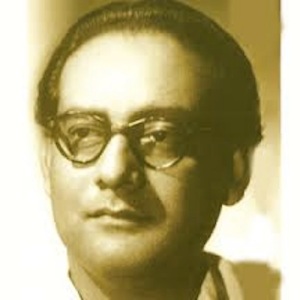
Hemant Kumar also groomed music composer Ravi, who went on to become one of the stalwarts of the golden era.
Hemant Kumar is obviously well known as a singer and he used his resonant voice to great effect. He was also a gifted composer. He would choose the right instruments to produce the desired sounds and tone and focus on making the melody touch the right notes to leave an everlasting haunting impression. Hats off to this gifted composer who left an indelible mark with some of the most haunting songs in Hindi film music that keep reverberating in our minds, hearts and soul.
Kalyanji-Anandji’s gems with Mukesh
No account of Bollywood’s musical greats can be complete without mention of the legendary composers, Kalyanji-Anandji.
Kalyanji-Anandji, the grocers turned music composers, started their musical journey in the late 50s with the film, Samrat Chandragupt. Initially, the elder of the two brothers, Kalyanji, started composing for Hindi films and later Anandji joined forces with Kalyanji and formed the famous duo.
Over the years, through the 60s, 70s and well into the 80s, the duo composed music for several films – many of which turned out to be box-office blockbusters. Quite a few of these films were musicals, which went down in Bollywood history as classics; for both the storyline and the beautiful songs, all of which were treats for music lovers. During the 1960s (considered as the golden years of Hindi film music with all the music directors at their inspirational best), Kalyanji-Anandji held their own against stalwarts like Shankar-Jaikishan, S D Burman, Naushad, Madan Mohan and O P Nayyar. Several of their compositions turned out to be hits, many featuring in the top 20 in popularity ratings each week.
One of the key features of their music was the orchestration – with emphasis on string instruments, pace, timing and rhythm.
A little known fact about the duo is their preference and affinity with Mukesh. While Mukesh had several hits with Shankar- Jaikishan (mostly for Raj Kapoor films), Kalyanji-Anandji also composed several songs for Mukesh that are memorable even to this day. Here is a list of 12 songs, which are, in my opinion, the best songs that Mukesh sang for Kalyanji-Anandji. In fact, Anandji said that they would ask lyric writers to emphasize the ‘N’ and ‘M’ sounds in the lyric to accentuate the lovely nasal resonance of Mukesh!
You can listen to some of the songs on the player below. Songs are automatically shuffled by the player. Click the play arrow below to enjoy the beauty of Mukesh’s voice! ( A tip to enhance your listening pleasure: When listening to the songs in the player, if you want to browse further on this site or another one, open a new window for further browsing. The player will continue to play Mukesh songs in the current window while you are browsing)
Chandi ki deewar na todi (Vishwas) – An immensely popular song when the movie was released, it is a beautiful rendition of the pangs of a poor lover. Highlights of the song include a lovely, fast paced introduction on the piano. Gulshan Bawra’s simple lyrics were accentuated and touchingly rendered by Mukesh.
Deewanon se ye mat poocho (Upkar) – Another heartfelt song- picturised on ‘Bharat’ Manoj Kumar- with a beautiful accordion and piano accompaniment. The usually ‘straight’ singer, Mukesh, was able to render the melody, with its multiple variations, with effortless ease
Koi jab tumhara hruday (Purab aur Paschim) – Another song picturised on Manoj Kumar. Unlike the first two songs, this is a slow paced one. Mukesh, with his crystal clear diction, lends beautiful expression to Indivar’s timeless lyrics. This song can easily be considered one of the best songs of Mukesh’s. Apparently, Manoj Kumar wanted very little orchestration since the hero is ‘alone’ in the movie when singing this song. Apart from Rebab like string instrument and a flute, there is nothing else by way of orchestration. Kalyanji Anandji recorded this song multiple times, because of the limited orchestra to ensure that the sound was right!
Chandan Sa Badan (Saraswati Chandra) – This film proved to be the turning point for Kalyanji-Anandji’s music.With this film, the duo showed that they could compose music with a strong classical base. This song, based on the Yaman Kalyan Raag, is a memorable one even today with its pure classical touches enhanced by Indivar’s lyrics. The silky sitar notes blend into the words effortlessly, creating musical manna for the discerning ear.
Jo Tumko Ho Pasand (Safar) – Another Kalyanji-Anandji innovation, the sound of the ‘car horn’ and the sweet tones of the flute are repeated throughout the song, with haunting effect.
Mere Toote Hue Dil Se (Chalia) –Filmed on Raj Kapoor, This gem is a sad song, set to a fast paced rhythm. The string instruments are once again the highlight of this song
Dum Dum Diga Diga (Chalia) – Even today, this song makes people dance! Composed in the Shankar- Jaikishan style, it is marked by fantastic rhythm and flawless timing
Main to Ek Khwab Hoon (Himalay ki god mein) – Another example of a sad song with haunting music! In this one, Mukesh touches high notes effortlessly.
Hum Chod Chale Hain mehfil ko (Ji Chahta hai) – A sad song, this is yet another stellar example of the pace and rhythm that characterised Kalyanji-Anandji’s music. Their pace turns even a sad song into an attractive and easily hummable tune
Jis dil mein basa tha pyar tera (Saheli) – This song was sung by both Lata Mangeshkar and Mukesh. However, the version sung by Mukesh became more popular and topped the Binaca Geet Mala charts for the year
Chand aahen barega (Phool bane angaarey) – Another timeless Mukesh gem! Anand Bakshi’s lyrics, celebrating the heroine’s beauty, were set to a wonderful rhythm by Kalyanji-Anandji.
Khush raho har khushi (Suhaag Raat) – A slow, sad song, which is characterized by a simple melody, that emphasizes the lovely lyrics


 A Guitar is perhaps the only instrument that almost everyone “plays”. Quite often, we see someone “playing” an ‘Air-Guitar’ (acting as though you are playing the Guitar with both hands, but without any real instrument!). I am sure you would have “played” air-guitar at least a few times and perhaps often. I guess most of the songs accompanied by the air-guitar were lively and energetic ones!
A Guitar is perhaps the only instrument that almost everyone “plays”. Quite often, we see someone “playing” an ‘Air-Guitar’ (acting as though you are playing the Guitar with both hands, but without any real instrument!). I am sure you would have “played” air-guitar at least a few times and perhaps often. I guess most of the songs accompanied by the air-guitar were lively and energetic ones!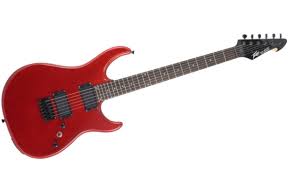
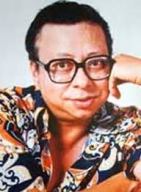
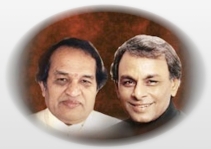

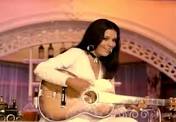 R D Burman used guitar beautifully in Churaliya hai tumne (Yaadon ki baaraat) – guitar played by
R D Burman used guitar beautifully in Churaliya hai tumne (Yaadon ki baaraat) – guitar played by 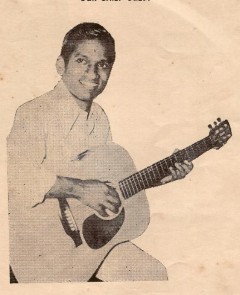 become an all-time classic in South Indian film music. S P Balasubrahmanyam, makes this an easy and soothing song to the ears with his mellifluous voice. S P Balasubrahmanyam also recounts an anecdote about the recording of this song. Apparently, this song was okayed after 16 takes because Ilayaraja, the perfectionist, wanted the right notes from the guitar and the guitarist
become an all-time classic in South Indian film music. S P Balasubrahmanyam, makes this an easy and soothing song to the ears with his mellifluous voice. S P Balasubrahmanyam also recounts an anecdote about the recording of this song. Apparently, this song was okayed after 16 takes because Ilayaraja, the perfectionist, wanted the right notes from the guitar and the guitarist interludes, there is a beautiful amalgam of sitar playing to the beats of tabla and drums. This song incidentally was the inspiration for a song that won a Grammy award! (Black Eyed peas used this song as the basis for their song Don’t phunk with my heart. Black Eyed Peas acknowledged the original creators Kalyanji-Anandji in this song.). However, I will use the term Fusion in this post to mean something totally different from a mere fusion of instrumental music.
interludes, there is a beautiful amalgam of sitar playing to the beats of tabla and drums. This song incidentally was the inspiration for a song that won a Grammy award! (Black Eyed peas used this song as the basis for their song Don’t phunk with my heart. Black Eyed Peas acknowledged the original creators Kalyanji-Anandji in this song.). However, I will use the term Fusion in this post to mean something totally different from a mere fusion of instrumental music. In the context of Hindi film songs, I will use the term Fusion to mean a mix of two different singing styles in the vocals in the same song.
In the context of Hindi film songs, I will use the term Fusion to mean a mix of two different singing styles in the vocals in the same song.
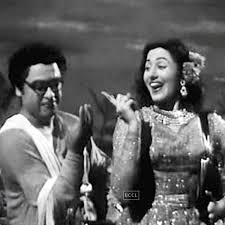
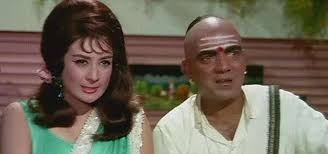
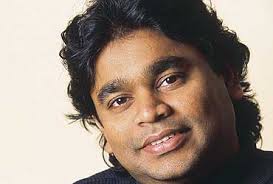

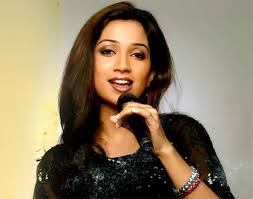 t crop of composers. Pritam did a wonderful job with the melodious fusion of a western song with Atif’s singing in Tera hone lagaa (Ajab prem ki ghazab kahani). Shreya Ghoshal was delightfully sweet in Vishal-Shekar’s Bahara Bahara hua dil pehli baar ve (I hate luv stories). This song is a melodious fusion of folk and romantic styles and is very soothing to the ears. Among the many songs that have bits of folk songs mixed with the main melody, this song can perhaps be rated among the best.
t crop of composers. Pritam did a wonderful job with the melodious fusion of a western song with Atif’s singing in Tera hone lagaa (Ajab prem ki ghazab kahani). Shreya Ghoshal was delightfully sweet in Vishal-Shekar’s Bahara Bahara hua dil pehli baar ve (I hate luv stories). This song is a melodious fusion of folk and romantic styles and is very soothing to the ears. Among the many songs that have bits of folk songs mixed with the main melody, this song can perhaps be rated among the best.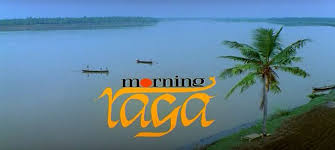

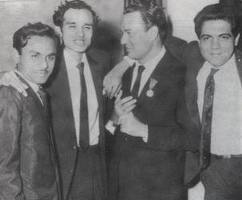
Hemant also developed a good association with Kishore Kumar. Perhaps their bond was the resonance in their voices! The extremely popular Woh shaam kuch (Khamoshi) is a memorable Kishore number. I do feel however that Hemant Kumar need not have used the chorus in this song since the words and Kishore’s deep resonant voice were enough to make an impact.
ReplyDeletegta 5 apk